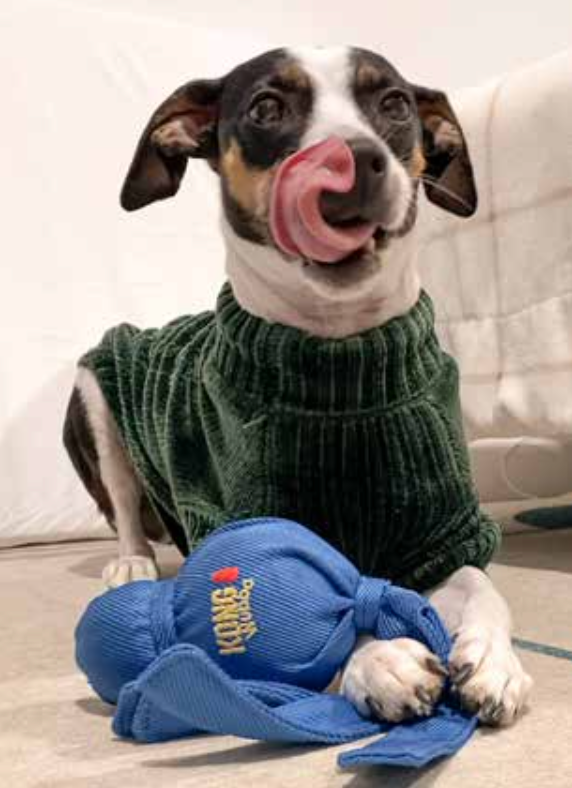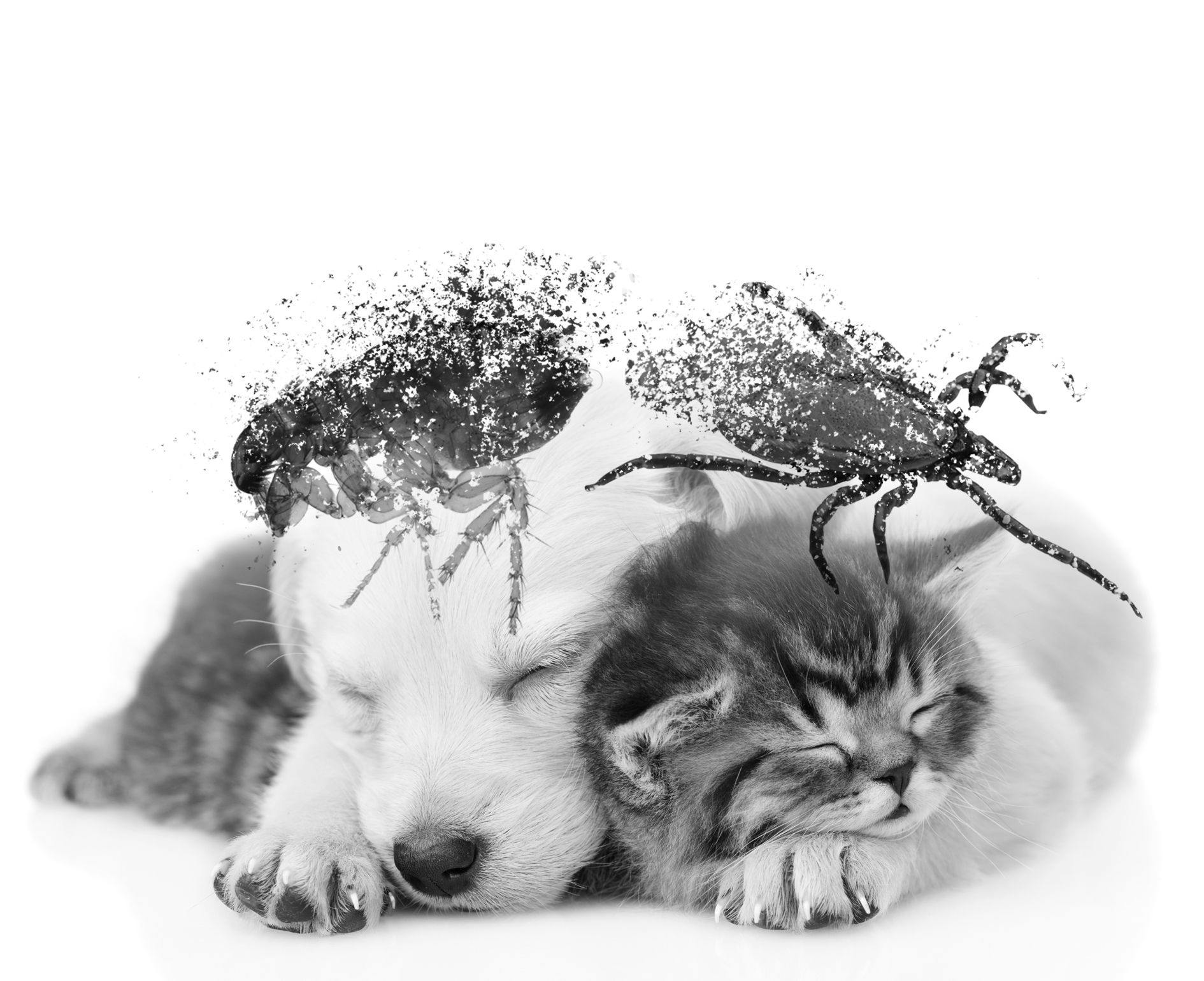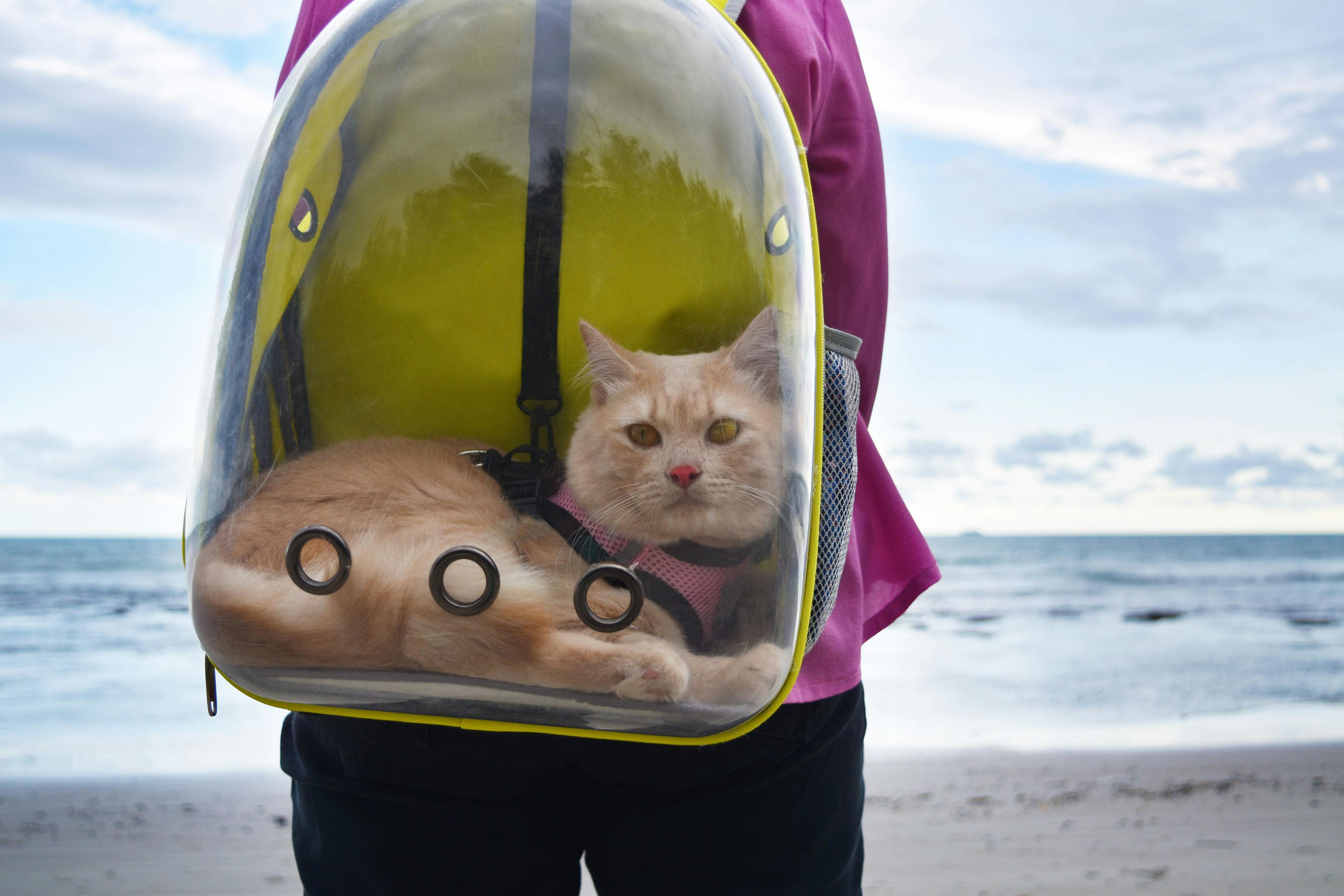The many facets of hypertension
High blood pressure silently weaponizes flowing blood, turning key organs into targets. By detecting the often subtle clues to its havoc, veterinarians can recognize cats and dogs at risk.
The cardiovascular system supplies the body with life-sustaining blood by generating adequate intravascular pressure to perfuse the tissues. If the pressure slumps, the organs may not receive suitable perfusion. But if it swells, they can suffer barotrauma.
The rate and force at which blood courses through the body combine with the diameter and elasticity of the vessels to create blood pressure (BP). Systolic BP (the maximal pressure against the walls of the arteries) is produced by cardiac contraction. Diastolic BP (the minimal pressure against the arterial walls) occurs as the heart refills.
How high is high?
Studies show systolic BP (SBP) ranges from 131 +/-20 to 154 +/-31 in clinically healthy dogs1-5 and runs slightly lower in healthy cats.6,7 Elevated pressures can cause target organ damage (TOD) that, according to the Veterinary Blood Pressure Society, tracks along with the severity of hypertension. Pressures above 150/95 pose risk for end-organ injury and may warrant intervention as follows8:
- Normotensive (minimal TOD risk): SBP < 150 mm Hg
- Prehypertensive (low TOD risk): SBP 150-159 mm Hg
- Hypertensive (moderate TOD risk): SBP 160-179 mm Hg
- Severely hypertensive (high TOD risk): SBP > 180 mm Hg
Target organs
The organs most vulnerable to hypertensive harm are the eyes, brain, heart, and kidneys.
Photo by Kelly Ehrmann

Eyes
Ocular conditions, including retinal detachment, papilledema, hyphema, and glaucoma, are the most common hypertensive injuries in cats. Prevalence rates for hypertensive retinopathies and choroidopathies in cats are as high as 100%9-12 but are also significant in dogs.13,14 Retinal detachment is the most frequently observed finding in both species, and acute onset of blindness may be the presenting complaint.15-17
Brain/cerebrovascular system
Hypertensive encephalopathy can occur in dogs18 and cats.19 Clinical signs, possibly related to hemorrhage and/or infarct, include seizures, altered mentation, weakness, and vestibular problems.20,21 Neurologic issues have been reported in up to 46% of hypertensive cats.10,19 They are more likely to occur with a sudden jump in BP, a pressure exceeding 180 mm Hg, or both; they often resolve if hypertension is treated early.22
Heart/cardiovascular system
Hypertension raises the load against which the heart must contract, sometimes leading to thickening of the heart muscle and cardiomegaly. In cats and dogs, this most often manifests as left ventricular concentric hypertrophy.23 In cats, sustained hypertension causes cardiomyopathy at a rate of 60%19 but rarely progresses to heart failure.10,20,24
Systolic heart murmurs and arrhythmia may be detectable on examination, with some patients presenting with exercise intolerance and—less frequently—epistaxis25-27 associated with vascular hypertensive injury.
Kidneys
Elevated systemic BP can damage the delicate vascular beds in the nephrons. Renal vessels then constrict, and glomerular filtration drops, resulting in sodium retention and—in a destructive feedback loop—water retention that can further elevate BP.28
Increased glomerular pressure leads to sclerotic changes in the glomeruli, enabling protein to leach out. Proteinuria likewise hastens progression of chronic kidney disease28,29 and has been associated with shorter survival times in hypertensive cats30,31 and dogs.32,33 In dogs, the severity of hypertension was shown to correspond directly to the magnitude of proteinuria and shortened survival times.34-36
Although it ravages sensitive vascular networks in key organs, hypertension usually does not announce itself with a clinical bang, such as a nosebleed or a seizure, sudden blindness, or even polyuria/polydipsia. Hypertension is alarmingly silent, and its damage to target organs occurs in increments over time.
Triad of hypertension
Hypertension is categorized into 3 types: situational, primary, and secondary.
- Situational hypertension is fleeting and brought on by environmental stressors. The psychological jolt generated by a visit to the veterinarian can prompt the autonomic nervous system to drive up BP. Anxiety-induced rises in BP can lead to erroneous diagnosis and unnecessary treatment.
- Primary (or “essential”) hypertension occurs without underlying triggers.
- Secondary hypertension, which accounts for more than 80% of cases in dogs and cats,5,15,37 is characterized by persistently elevated BP concurrent with precipitating disease (or therapeutic agent).
Etiologies include acute35 and chronic kidney disease,31,38 hyperthyroidism,38 hypothyroidism,32 hyperadrenocorticism,39,40 hyperaldosteronism,41 pheochromocytoma,42 and diabetes.43
Of these, chronic kidney disease has the strongest association with hypertension: both cause and effect for one another, the 2 are inextricably linked. Among other things, diseased kidneys are unable to properly couple the excretion of salt and water with changes in blood volume. And they inappropriately activate the renin-angiotensin-aldosterone system (RAAS), which further spikes blood volume.
The main iatrogenic causes of secondary hypertension are glucocorticoids,39,40 mineralocorticoids,41 and erythropoietin.44
Tallying tension
The American College of Veterinary Internal Medicine (ACVIM) advocates BP screenings every 6 months for animals with the underlying diseases.1 Readings should also be performed in geriatric (over age 9 years) and/or obese cats and dogs, as well as those exhibiting clinical signs compatible with hypertensive end-organ damage, such as retinal hemorrhage, ataxia, dyspnea, and proteinuria.
Measurements should be conducted in a quiet room with the owner present, if possible. The patient should not be sedated and allowed to acclimate to the examination room for 5 to 10 minutes before testing, and minimally restrained for positioning in sternal or lateral recumbency.
Although direct BP measurement—which involves arterial catheterization—is the gold standard, it is not practical. In the clinical setting, noninvasive, indirect techniques are used: Doppler devices utilize ultrasound waves that detect blood flow; oscillometric units monitor arterial pulse waves.
Proper cuff selection is key to obtaining accurate measurements. For Doppler and oscillometric techniques, the cuff width should be 30% to 40% of the circumference of the cuff site (leg or tail).
ACVIM recommends obtaining 5 to 7 values and discarding the first. Measurements should be repeated until values are consistent. Values are then averaged into a single number.
Readings are not always straightforward, and can be altered by measurement method, operator experience, patient position, gender, age, breed, and temperament.45-50 Aging dogs have been shown to experience a 1 to 3 mm Hg per year, and cats 0.4 +/- 0.1 mm Hg per 100 days.51 In sight hounds (ie, greyhounds), pressures run 7 to 20 mm Hg higher than in other canine populations,47,52 attributed to situational rather than true hypertension.
Animals deemed truly hypertensive should be retested at least twice over 4 to 8 weeks. For severe hypertension, however, testing should be completed within 2 weeks to meet the risk of target organ damage. If organ injury, such as retinopathy, is already present, treatment should be initiated after the first measurement session, with results confirmed over subsequent visits.
Easing the pressure
Where secondary hypertension is present, the underlying disease should be treated first. Although it may lower BP and render the patient’s hypertension more amenable to treatment, this alone will rarely make the patient normotensive. Medications are usually required:
Angiotensin-converting enzyme (ACE) inhibitor (ie, enalapril, benazepril): RAAS inhibitors, antiproteinuric, usually initial drug of choice in dogs,53 less effective in cats.37,54
Angiotensin II receptor blocker (ie, losartan, telmisartan): RAAS inhibitors, antiproteinuric, first-line antihypertensive agents in dogs.55,56
Aldosterone antagonist (spironolactone): RAAS inhibitor, antiproteinuric, potassium-sparing diuretic, effective in dogs and cats.57
Calcium-channel blocker (amlodipine): Inhibits vasoconstriction; treatment of choice in cats, used as monotherapy or combined with ACE inhibitor or angiotensin-receptor blocker9,10,19; in dogs, used in multiagent therapy only, combined with ACE inhibitors.58
α-adrenergic blocker (prazosin, phenoxybenzamine): Produce vasodilation; adjunctive therapy for dogs when initial antihypertensive is inadequate.42
β-blocker (atenolol): Slows heart rate, lowers BP; add-on treatment for dogs and cats when initial antihypertensive agent falls short of desired effect.9,19,59
Direct vasodilator (hydralazine, acepromazine): less commonly used to manage hypertension, except for emergency situations.20
Thiazide diuretic (hydrochlorothiazide): used in minority of patients in whom volume expansion is clinically apparent.10
Hypertension related to certain conditions may be best addressed using specific types of agents, such as α-adrenergic and β-adrenergic blockers in cases of pheochromocytoma or aldosterone-receptor blockers in animals with adrenal tumors.21
Medical management of hypertension can be augmented by weight loss in obese patients, and dietary salt restriction. In managing hypertensive patients, the goal is to achieve gradual drops in systolic pressure to less than 170 mm Hg. BP checks should be performed every 2 weeks, along with corresponding changes in dosages and/or drugs. Once regulated, SBP should be rechecked every 3 months and blood work performed annually.
Joan Capuzzi, VMD, is a small animal veterinarian and journalist based in the Philadelphia, Pennsylvania area.
References
- Acierno MJ, Brown S, Coleman AE, et al. ACVIM consensus statement: guidelines for the identification, evaluation, and management of systemic hypertension in dogs and cats. J Vet Intern Med. 2018;32(6):1803-1822. doi:10.1111/jvim.15331
- Bodey AR, Michell AR. Epidemiological study of blood pressure in domestic dogs. J Small Anim Pract. 1996;37(3):116‐125. doi:10.1111/j.1748-5827.1996.tb02358.x
- Bright JM, Dentino M. Indirect arterial blood pressure measurement in nonsedated Irishwolfhounds: reference values for the breed. J Am Anim Hosp Assoc. 2002;38(6):521‐526. doi:10.5326/0380521
- Kallet AJ, Cowgill LD, Kass PH. Comparison of blood pressure measurements obtained in dogs by use of indirect oscillometry in a veterinary clinic versus at home. J Am Vet Med Assoc. 1997;210(5):651‐654.
- Stepien RL, Rapoport GS. Clinical comparison of three methods to measure blood pressure in nonsedated dogs. J Am Vet Med Assoc. 1999;215(11):1623-1628.
- Belew AM, Barlett T, Brown SA. Evaluation of the white‐coat effect in cats. J Vet In-tern Med. 1999;13(2):134‐142. doi:10.1892/0891-6640(1999)013<0134:eotwce>2.3.co;2
- Brown SA, Langford K, Tarver S. Effects of certain vasoactive agents on the long-term pattern of blood pressure, heartrate, and motor activity in cats. Am J Vet Res. 1997;58(6):647-652.
- Brown S, Atkins C, Bagley R, et al. Guidelines for the identification, evaluation, and management of systemic hypertension in dogs and cats. J Vet Intern Med. 2007;21:542-558. doi:10.1111/j.1939-1676.2007.tb03005.x
- Maggio F, De Francesco TC, Atkins CE, Pizzirani S, Gilger BC, Davidson MG. Ocular lesions associated with systemic hypertension in cats: 69 cases (1985‐1998). J Am Vet Med Assoc. 2000;217(5):695‐702. doi:10.2460/javma.2000.217.695
- Elliott J, Barber PJ, Syme HM, Rawlings JM, Markwell PJ. Feline hypertension: clinical findings and response to antihypertensive treatment in 30 cases. J Small Anim Pract. 2001;42(3):122‐129. doi:10.1111/j.1748-5827.2001.tb02008.x
- Chetboul V, Lefebvre HP, Pinhas C, Clerc B, Boussouf M, Pouchelon JL. Spontaneous feline hypertension: clinical and echocardiographic abnormalities, and survival rate. J Vet Intern Med. 2003;17(1):89‐95. doi:10.1892/0891-6640(2003)017<0089:sfhcae>2.3.co;2
- Carter JM, Irving AC, Bridges JP, Jones BR. The prevalence of ocular lesions associated with hypertension in a population of geriatric cats in Auckland, New Zealand. NZ Vet J. 2014;62(1):21‐29. doi:10.1080/00480169.2013.823827
- Littman MP, Robertson JL, Bovee KC. Spontaneous systemic hypertension in dogs: five cases (1981‐1983). J Am Vet Med Assoc. 1988;193(4):486‐494.
- Bovee KC, Littman MP, Crabtree BJ, Aguirre G. Essential hypertension in a dog. J Am Vet Med Assoc. 1989;195(1):81‐86.
- Crispin SM, Mould JR. Systemic hypertensive disease and the feline fundus. Vet Ophthalmol. 2001;4(2):131‐140. doi:10.1046/j.1463-5224.2001.00190.x
- Leblanc NL, Stepien RL, Bentley E. Ocular lesions associated with systemic hypertension in dogs: 65 cases (2005‐2007). J Am Vet Med Assoc. 2011;238(7):915‐921. doi:10.2460/javma.238.7.915
- Morgan RV. Systemic hypertension in four cats: ocular and medical findings. J Am Anim Hosp Assoc. 1986;22(5):615‐621.
- Jacob F, Polzin DJ, Osborne CA, et al. Association between initial systolic blood pressure and risk of developing a uremic crisis or of dying in dogs with chronic renal failure. J Am Vet Med Assoc. 2003;222(3):322‐329. doi:10.2460/javma.2003.222.322
- Littman MP. Spontaneous systemic hypertension in 24 cats. J Vet Intern Med. 1994;8(2):79‐86. doi:10.1111/j.1939-1676.1994.tb03202.x
- Kyles AE, Gregory CR, Wooldridge JD, et al. Management of hypertension controls postoperative neurologic disorders after renal transplantation in cats. Vet Surg. 1999;28(6):436‐441. doi:10.1111/j.1532-950x.1999.00436.x
- Mathur S, Syme H, Brown CA, et al. Effects of the calcium channel antagonist amlodipine in cats with surgically induced hypertensive renal insufficiency. Am J Vet Res. 2002;63(6):833‐839. doi:10.2460/ajvr.2002.63.833
- Lowrie M, De Risio L, Dennis R, Llabres-Diaz F, Garosi L. Concurrent medical conditions and long‐term outcome in dogs with nontraumatic intracranial hemorrhage. Vet Radiol Ultrasound. 2012;53(4):381‐388. doi:10.1111/j.1740-8261.2012.01934.x
- Littman MP, Drobatz KJ. Hypertensive and hypotensive disorders. In: Ettinger SJ, ed. Textbook of Veterinary Internal Medicine. W. B. Saunders; 1995:93‐100.
- Lesser M, Fox PR, Bond BR. Assessment of hypertension in 40 cats with left ventricular hypertrophy by Doppler‐shift sphygmomanometry. J Small Anim Pract. 1992;33(2):55‐58. doi:10.1111/j.1748-5827.1992.tb01072.x
- Bissett SA, Drobatz KJ, McKnight A, Degernes LA. Prevalence, clinical features, and causes of epistaxis in dogs: 176 cases (1996–2001). J Am Vet Med Assoc. 2007;231(12):1843‐1850. doi:10.2460/javma.231.12.1843
- Mylonakis ME, Saridomichelakis MN, Lazaridis V, Leontides LS, Kostoulas P, Koutinas AF. A retrospective study of 61 cases of spontaneous canine epistaxis (1998 to 2001). J Small Anim Pract. 2008;49(4):191‐196. doi:10.1111/j.1748-5827.2007.00441.x
- Strasser JL, Hawkins EC. Clinical features of epistaxis in dogs: a retrospective study of 35 cases (1999‐2002). J Am Anim Hosp Assoc. 2005;41(3):179‐184. doi:10.5326/0410179
- Syme HM, Markwell PJ, Pfeiffer D, Elliott J. Survival of cats with naturally occurring chronic renal failure is related to severity of proteinuria. J Vet Intern Med. 2006;20(3):528‐535. doi:10.1892/0891-6640(2006)20[528:socwno]2.0.co;2
- King JN, Gunn‐Moore DA, Tasker S, Gleadhill A, Strehlau G; Benazepril in Renal Insufficiency in Cats Study Group. Tolerability and efficacy of benazepril in cats with chronic kidney disease. J Vet Intern Med. 2006;20(5):1054‐1064. doi:10.1892/0891-6640(2006)20[1054:taeobi]2.0.co;2
- Jepson RE, Brodbelt D, Vallance C, Syme HM, Elliott J. Evaluation of predictors of the development of azotemia in cats. J Vet Intern Med. 2009;23(4):806‐813. doi:10.1111/j.1939-1676.2009.0339.x
- Chakrabarti S, Syme HM, Elliott J. Clinicopathological variables predicting progression of azotemia in cats with chronic kidney disease. J Vet Intern Med. 2012;26(2):275-281. doi:10.1111/j.1939-1676.2011.00874.x
- Wehner A, Hartmann K, Hirschberger J. Associations between proteinuria, systemic hypertension and glomerular filtration rate in dogs with renal and non‐renal diseases. Vet Rec. 2008;162(5):141‐147. doi:10.1136/vr.162.5.141
- Finco DR. Association of systemic hypertension with renal injury in dogs with induced renal failure. J Vet Intern Med. 2004;18(3):289‐294. doi:10.1892/0891-6640(2004)18<289:aoshwr>2.0.co;2
- Ortega TM, Feldman EC, Nelson RW, Willits N, Cowgill LD. Systemic arterial blood pressure and urine protein/creatinine ratio in dogs with hyperadrenocorticism. J Am Vet Med Assoc. 1996;209(10):1724‐1729.
- Francey T, Cowgill LD. Hypertension in dogs with severe acute renal failure. J Vet Intern Med. 2004;18:418(A).
- Anderson LJ, Fisher EW. The blood pressure in canine interstitial nephritis. Res Vet Sci. 1968;9(4):304-313.
- Kobayashi DL, Peterson ME, Graves TK, Lesser M, Nichols CE. Hypertension in cats with chronic renal failure or hyperthyroidism. J Vet Intern Med. 1990;4(2):58‐62. doi:10.1111/j.1939-1676.1990.tb03104.x
- Brown SA, Brown CA, Jacobs G, Stiles J, Hendi RS, Wilson S. Effects of the angiotensin converting enzyme inhibitor benazepril in cats with induced renal insufficiency. Am J Vet Res. 2001;62(3):375-383. doi:10.2460/ajvr.2001.62.375
- Schellenberg S, Mettler M, Gentilini F, Portmann R, Glaus TM, Reusch CE. The effects of hydrocortisone on systemic arterial blood pressure and urinary protein excretion in dogs. J Vet Intern Med. 2008;22(2):273-281. doi:10.1111/j.1939-1676.2007.0039.x
- Ueno Y, Mohara O, Brosnihan KB, Ferrario CM. Characteristics of hormonal and neurogenic mechanisms of deoxycorticosterone-induced hypertension. Hypertension. 1988;11(2Pt2):I172-I177. doi:10.1161/01.hyp.11.2_pt_2.i172
- Ash RA, Harvey AM, Tasker S. Primary hyperaldosteronism in the cat: a series of 13 cases. J Feline Med Surg. 2005;7(3):173-182. doi:10.1016/j.jfms.2004.08.007
- Wimpole JA, Adagra CFM, Billson MF, Pillai DN, Foster DJ. Plasma free metanephrines in healthy cats, cats with non-adrenal disease and a cat with suspected phaeochromocytoma. J Feline Med Surg. 2010;12(6):435-440. doi:10.1016/j.jfms.2009.10.010
- Struble AL, Feldman EC, Nelson RW, Kass PH. Systemic hypertension and proteinuria in dogs with diabetes mellitus. J Am Vet Med Assoc. 1998;213(6):822-825.
- Cowgill LD, James KM, Levy JK, et al. Use of recombinant human erythropoietin for management of anemia in dogs and cats with renal failure. J Am Vet Med Assoc. 1998;212(4):521‐528.
- Gouni V, Tissier R, Misbach C, et al. Influence of the observer’s level of experience on systolic and diastolic arterial blood pressure measurements using Doppler ultra-sonography in healthy conscious cats. J Feline Med Surg. 2015;17(2):94‐100. doi:10.1177/1098612X14532087
- Marino CL, Cober RE, Iazbik MC, Couto CG. White‐coat effect on systemic blood pressure in retired racing Greyhounds. J Vet Intern Med. 2011;25(4):861‐865. doi:10.1111/j.1939-1676.2011.00735.x
- Surman S, Couto CG, Dibartola SP, Chew DJ. Arterial blood pressure, proteinuria, and renal histopathology in clinically healthy retired racing greyhounds. J Vet Intern Med. 2012;26(6):1320-1329. doi:10.1111/j.1939-1676.2012.01008.x
- Rondeau DA, Mackalonis ME, Hess RS. Effect of body position on indirect measurement of systolic arterial blood pressure in dogs. J Am Vet Med Assoc. 2013;242(11):1523‐1527. doi:10.2460/javma.242.11.1523
- Scansen BA, Vitt J, Chew DJ, Schober KE, Bonagura JD. Comparison of forelimb and hindlimb systolic blood pressures and proteinuria in healthy Shetland sheep-dogs. J Vet Intern Med. 2014;28(2):277‐283. doi:10.1111/jvim.12289
- Remillard RL, Ross JN, Eddy JB. Variance of indirect blood pressure measurements and prevalence of hypertension in clinically normal dogs. Am J Vet Res. 1991;52(4):561‐565.
- Meurs KM, Miller MW, Slater MR, Glaze K. Arterial blood pressure measurement in a population of healthy geriatric dogs. J Am Anim Hosp Assoc. 2000;36(6):497‐500. doi:10.5326/15473317-36-6-497
- Schneider HP, Truex RC, Knowles JO. Comparative observations of the hearts of mongrel and greyhound dogs. Anat Rec. 1964;149:173‐179. doi:10.1002/ar.1091490202
- Bijsmans ES, Jepson RE, Chang YM, Syme HM, Elliott J. Changes in systolic blood pressure overtime in healthy cats and cats with chronic kidney disease. J Vet Intern Med. 2015;29(3):855‐861. doi:10.1111/jvim.12600
- Sent U, Gössl R, Elliott J, Syme HM, Zimmering T. Comparison of efficacy of long-term oral treatment with telmisartan and benazepril in cats with chronic kidney disease. J Vet Intern Med. 2015;29(6):1479-1487. doi:10.1111/jvim.13639
- Jenkins TL, Coleman AE, Schmiedt CW, Brown SA. Attenuation of the pressor response to exogenous angiotensin by angiotensin receptor blockers and benazepril hydrochloride in clinically normal cats. Am J Vet Res. 2015;76(9):807‐813. doi:10.2460/ajvr.76.9.807
- Glaus AM, Elliott J, Albrecht B. Efficacy of telmisartan in hypertensive cats: results of alarge European clinical trial. Presented at: 27th ECVIM‐CA Congress; September 14-16, 2017; St. Julian’s, Malta. https://www.vin.com/apputil/content/defaul-tadv1.aspx?pId=19132&catId=103558&id=8172783&ind=336&objTypeID=17
- Grauer GF, Greco DS, Getzy DM, et al. Effects of enalapril versus placebo as a treatment for canine idiopathic glomerulonephritis. J Vet Intern Med. 2000;14(5):526‐533. doi:10.1892/0891-6640(2000)014<0526:eoevpa>2.3.co;2
- Brown S. Introduction from the International Renal Interest Society. J Vet Intern Med. 2013;27(suppl1):S1. doi:10.1111/jvim.12229
- Henik RA, Stepien RL, Wenholz LJ, Dolson MK. Efficacy of atenolol as a single anti-hypertensive agent in hyperthyroid cats. J Feline Med Surg. 2008;10(6):577‐582. doi:10.1016/j.jfms.2007.11.008

















